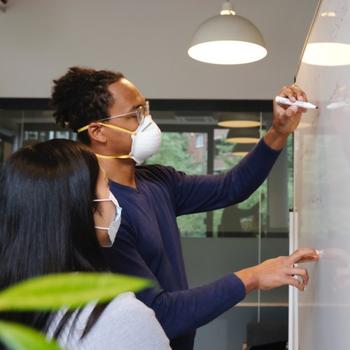By Alicia Espinoza
June 4, 2021
One of the most pressing issues school and district leaders currently face is how to effectively spend an unprecedented influx of funds that could change the trajectory of education. The American Rescue Plan’s Elementary and Secondary School Emergency Relief Fund, known as ARP ESSER, provides one-time federal dollars to support learning recovery following the disruptions brought by the COVID-19 pandemic. Meanwhile, a crucial question is: How can districts and schools leverage these funds to address the long-term, persistent inequities faced by their low-income, historically disenfranchised, and underserved students?
Although the funding is temporary, ARP ESSER provides a historic opportunity to dismantle many long-standing, oppressive policies and practices that perpetually yield inequitable access to opportunities and disparate outcomes. The pandemic forced educators to reimagine, redesign, and even uproot old ways of thinking and doing schooling. The additional funding could provide educators with more time and capacity, and we can utilize the perspective brought by a school year filled with experimentation in new ways of teaching and learning. I encourage school and district leaders to analyze new and existing policies and practices through an equity lens. The four-step process outlined below will help determine what is working well in your school or district versus what may be disadvantageous to students of color, low-income students, English language learners, and students with disabilities.
Step 1: Establish a Team
Start by bringing together a team of key internal and external stakeholders that includes:
- People with varying perspectives and experiences,
- People who perform different roles in the community your school or district serves, and
- At least one school and district member with decision-making authority.
Use the following guiding questions to anchor your discussion. Then, the team should determine who will follow up on the action steps identified and establish a timeline and process for capturing decisions on suggested changes to existing policies or practices.
Step 2: Assess Need by Examining School and District Conditions
When determining which policies or practices to prioritize for further examination or potential development, consider the following guiding questions:
- How does the policy or practice fit within the community values, cultures, and history?
- Which stakeholders or populations does this policy or practice intend to serve or influence?
- What are the current or expected outcomes of this policy or practice? Who benefits, and how are the benefits distributed across race, ethnicity, socioeconomic status, and setting?
- What data do we have, and what additional quantitative and qualitative data do we need to better understand the impact?
- How can data be disaggregated to clarify the needs and outcomes of the audience and/or the groups who may be most affected by this policy or practice?
- What contributing and root causes are linked to the issues at hand?
- What assumptions may reinforce a deficit perspective of the relevant groups? How can we leverage their strengths and assets?
- What additional information do we need to understand relevant groups’ needs, experiences, and perspectives? How do we access it?
Step 3: Determine Systemic Readiness for Change
In examining the capacity of school and district staff to identify and execute transformational change, consider the following guiding questions:
- What evidence exists that our school or district is ready to initiate an equity-focused change effort?
- Do we have a common definition of equity?
- Who was involved in the process of crafting that definition? Did the process include diverse stakeholders? If not, how can we create an opportunity to invite and honor the voices and perspectives of those who were not included?
- What are the indicators that there is a sense of urgency to apply an equity lens to new and existing policies and practices? Are there known barriers to applying an equity lens?
- Have we conducted an equity audit? If so, how can the findings inform decision-making? If not, should we administer one to better inform our decisions?
- What professional learning, such as cultural proficiency training, is needed to support the adults who are determining and implementing the necessary changes to policies and practices?
Step 4: Make Decisions for Transformational Change
In selecting, revising, or developing new policies and practices, consider the following guiding questions:
- What evidence-based approaches have we considered that specifically address the communities most affected by this policy or practice?
- Is the evidence base sufficient? If not, what adaptations or modifications can be made to achieve desired outcomes?
- How can we engage the communities our school or district serves in the implementation of the evidence-based practices?
- How is the proposed policy or practice designed to provide more equitable access to resources and benefits?
- What strategies can we use to reduce the negative impacts or disparities that may result from this policy or practice?
While engaging in these discussions may feel complicated and at times uncomfortable, rest assured that most of you have already initiated various aspects of this process. The pandemic required substantial input from diverse stakeholders in the form of surveys, focus groups, and virtual town halls. Stakeholders provided input on immediate and emerging needs, desired models for teaching and learning, and structures for monitoring the effects on every group in your educational community. I encourage you to study what worked and what didn’t, both in process and product. Leverage those same stakeholders in reenvisioning what schooling has the promise to be, and the students it has the potential to reach.
Alicia Espinoza leads the Region 9 Comprehensive Center’s equitable instruction project with the Iowa Department of Education and is a senior technical assistance consultant at the American Institutes for Research. Espinoza has more than 20 years of experience as an educator and coach, providing professional learning and support to state, district, school, and teacher leaders in the implementation of evidence-based practices in curriculum, instruction, and assessment to equitably serve all students.
Photo by airfocus on Unsplash.
